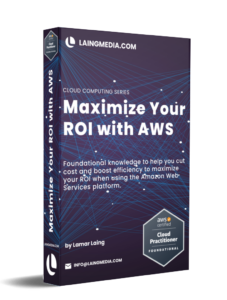We’ll walk you through the entire process of building a winning marketing strategy, from identifying your target audience to creating a content plan and executing effectively. Whether you’re just starting or looking to take your marketing to the next level, this guide will provide you with invaluable insights and actionable advice that you can use to build a marketing strategy that delivers results. Here are the secrets to creating a marketing strategy to help you achieve your business goals.
Understanding the Marketing Funnel
The marketing funnel is a framework that illustrates the different stages that a potential customer goes through before making a purchasing decision. The funnel is divided into four stages and is the same for every business, including seed-stage startups: awareness, interest, desire, and action.
Understanding the marketing funnel is critical in building an effective marketing strategy because it helps you identify the stage of the funnel that your target audience is in and tailor your marketing efforts accordingly.
At the top of the funnel is the awareness stage, where potential customers become aware of your brand and offer. The goal is to create brand awareness and generate interest in your product or service through various channels.
Moving down the funnel, we have the interest stage. At this stage, potential customers have shown some level of interest in your brand or product. In this stage, you focus on providing more information and building trust with your audience through educational content, email marketing, and webinars.
In the desire stage, potential customers have a strong interest in your product or service and are considering making a transaction. Here is where you want to create a sense of urgency and persuade potential customers to take action with limited-time offers, discounts, and testimonials.
Finally, the action stage is where potential customers make a purchase. You want to ensure the customer’s purchasing process is smooth and easy. You can achieve this through a user-friendly website, a clear call-to-action, and a simple checkout process.
By understanding the marketing funnel and the different stages that potential customers go through, you can create a marketing strategy for your startup that speaks to your audience at each stage of the funnel and ultimately drives conversions.
Conducting Market Research
Market research gathers and analyzes information about your target market, competitors, and industry trends. Conducting market research is critical in building a marketing strategy because it helps you understand your target audience’s needs and preferences, identify gaps in the market, and stay ahead of your competition. Be sure to complete this step!
The first step in conducting market research for your startup is to identify your target market. There are no details that are too small. This includes demographic information such as age, gender, and location, as well as psychographic information such as values, interests, and personality traits. Once you have identified your target market, you can use various research methods such as surveys, focus groups, and interviews to gather information about their needs and preferences.
Another critical aspect of market research is competitor analysis. Take time to identify your main competitors and analyze their strengths and weaknesses. By understanding your competitors’ marketing strategies, you can identify gaps in the market and differentiate your brand from the competition.
Finally, staying up-to-date on industry trends is critical in building a marketing strategy that is relevant and effective. Find resources and information by reading industry publications, attending conferences, and following thought leaders in your industry.
Market research lets you gather the necessary insights to inform your marketing strategy and help you stay ahead of the competition.
Defining Your Target Audience
Defining your target audience is critical in building a marketing strategy that resonates with your target market. Your target audience is the group of people who are most likely to be interested in your product or service, and understanding their needs and preferences is essential in creating marketing messages that speak to them.
To define your target audience, start by analyzing your market research data. Look for patterns and trends in the data to help you identify common characteristics among your target audience. This can include demographic information such as age, gender, and location, as well as psychographic information such as values, interests, and personality traits.
Once you have identified your target audience, create buyer personas representing your ideal customers. A buyer persona is a fictional representation of your target audience that includes demographic and psychographic information, as well as their goals and pain points. Creating buyer personas can help you tailor your marketing messages to your target audience and ensure your efforts are focused and effective.
Developing Your Unique Selling Proposition (USP)
Your unique selling proposition (USP) is what sets your business apart from the competition and makes it stand out in the market. Developing a strong USP is critical in building a marketing strategy that resonates with your target audience and drives conversions.
To develop your USP, start by analyzing your market research data and identifying gaps in the market that your business can fill. Look for areas where your competitors are falling short and recognize your business’s unique value proposition.
Your USP should be clear, concise, and focused on your product or service’s benefits to your target audience. It should also be unique and different from what your competitors are offering. Once you have developed your USP, incorporate it into your marketing messages to create a strong brand identity and drive conversions.
Setting Marketing Goals and Objectives
Setting clear and measurable marketing goals and objectives is critical in building a marketing strategy that delivers results. You should align your marketing goals with your overall business objectives and be specific, measurable, achievable, relevant, and time-bound (SMART).
To set your marketing goals, start by analyzing your business objectives and identifying the marketing activities that can help you achieve them. This can include increasing brand awareness, generating leads, and driving conversions.
Once you have identified your marketing goals, break them down into smaller, actionable objectives. This can include increasing website traffic, improving email open rates, and increasing social media engagement. Setting clear and measurable goals allows you to track progress and adjust your marketing strategy.
Tactics for Building Brand Awareness
Building brand awareness is critical in creating a marketing strategy that drives growth and success. Brand awareness is the extent to which people are familiar with your brand and what it represents. The more people are aware of your brand, the more likely they are to consider it when making a purchasing decision.
There are many tactics for building brand awareness, including social media marketing, content marketing, and advertising. Social media marketing can help you reach a large audience and build a community around your brand, while content marketing can help you establish thought leadership and provide value to your target audience. Advertising can help you reach a targeted audience and increase brand visibility.
TIP: To build brand awareness, focus on creating consistent and memorable brand messaging across all channels. Use visual elements such as logos and colors to create a strong brand identity, and leverage social media platforms to engage with your target audience and build brand loyalty.
Strategies for Lead Generation and Conversion
Lead generation and conversion are critical in building a marketing strategy that drives growth and success, especially for startups. Lead generation involves attracting potential customers to your business and capturing their contact information. Conversion is turning those potential customers into paying customers.
There are many lead generation and conversion strategies, including email marketing, content marketing, and social media marketing. Email marketing can help you build relationships with potential customers and encourage them to take action.
TIP: To generate leads and drive conversions, focus on creating compelling content and providing value to your target audience. Use lead magnets such as free trials and demos to capture contact information, and use email marketing to nurture those leads and encourage them to take action.
Measuring and Analyzing Your Marketing Efforts
Measuring and analyzing your marketing efforts is critical in building a startup’s marketing strategy that delivers results. By tracking your progress and analyzing your data, you can identify areas for improvement and adjust your plan as needed.
Use tools such as Google Analytics, social media analytics, and email marketing analytics to measure and analyze your marketing efforts. These tools can help you track website traffic, social media engagement, email open rates, and click-through rates.
Once you have gathered your data, analyze it to identify patterns and trends. Look for areas of your marketing strategy that are performing well and areas that need improvement. Use this information to refine and optimize your marketing strategy and improve your results.
Refining and Optimizing Your Marketing Strategy
Refining and optimizing your marketing strategy is critical in building a marketing strategy that delivers results. By continuously analyzing your data and refreshing your strategy, you can stay ahead of the competition and drive growth and success.
To refine and optimize your marketing strategy, start by analyzing your data and identifying areas for improvement. This can include improving website user experience, optimizing email marketing campaigns, and adjusting social media marketing tactics.
Once you have identified areas for improvement, create an action plan to address them. This can look like A/B testing different marketing messages, adjusting your targeting criteria, and improving your website design and functionality.
Finally, continuously monitor and analyze your data to ensure your marketing strategy delivers results. Use this information to refine and optimize your marketing strategy and stay ahead of the competition.
A Smart Strategy for Your Seed Stage Startup
Building a marketing strategy that drives growth and success takes time and consistency. However, by following the steps outlined in this guide, you can create a comprehensive marketing strategy that delivers results. From understanding the marketing funnel to refining and optimizing your marketing strategy, each step matters in creating a winning marketing strategy. By continuously analyzing your data and adjusting your strategy as needed, you can stay ahead of the competition and achieve your business goals.
Are you ready to create a comprehensive marketing strategy that delivers results for your business? Let Laing Media help you refine and optimize your marketing strategy to achieve your goals. Our team of experts specializes in data-driven marketing strategies that keep you ahead of the competition. Don’t wait to see the results of your marketing efforts. Contact us today at Laing Media (laingmedia.com) and let us help you succeed!
AI-Powered Websites: The Future of Business
Businesses are constantly seeking innovative ways to stay ahead of the competition. One of the most promising and transformative technologies currently available is Artificial Intelligence (AI). AI is reshaping various industries, and the world of web development is no exception. AI-powered websites are rapidly becoming the future of business, offering numerous benefits such as enhanced user experiences, improved customer engagement, and increased productivity.
7 Benefits of Content Marketing for Business
Are you looking for an effective way to boost your business's online presence and engage with your target audience? Content marketing has become a powerful tool for businesses of all sizes and industries. By creating compelling and valuable content, you can attract...
The Power of a Dedicated Tech Support Team: Enhancing Customer Satisfaction and Retention in Your SaaS Business
The SaaS industry changes almost daily. However, one thing remains constant: the importance of customer satisfaction and retention. As businesses strive to provide cutting-edge solutions and innovative software, they often overlook a crucial component – a dedicated...
Talk to an expert.
For more information on holiday season content and Laing Media’s digital marketing services.

Lamar Laing
Senior Web Developer
e: sales@laingmedia.com
p: (770) 696-6583






